- Joined
- Jul 27, 2009
- Messages
- 4,097
An aspect of light performance that gets a lot of attention, and results in a lot of questions from shoppers is “windowing”. A window in a diamond or other gemstone is an area of the gem that is not returning light to the eye. Some facet or facets, rather than acting as mirrors, instead act as windows allowing light to pass through them. This is also known more generally as light leakage.
At some tilt angles all diamonds will start to window, at least to some degree. Well cut round brilliants can withstand a lot of tilt without much windowing. Other shapes tend to show more windowing depending on facet design, length to width ratio, proportions and facet angles. Learning to assess windowing, and in particular when windowing is excessive, is one key to selecting a high performing diamond.
Step cuts tend to show windowing more prominently because of their large horizontal facets. Emerald cuts in particular are a regular topic of discussion with regard to windowing. Unfortunately, it is not possible to predict from the numbers on a GIA report whether an emerald cut will have excessive windowing. One exception to this rule is a diamond with the new AGS Ideal addendum report as it has passed through the AGS light performance system without any deductions, and the ray tracer has analyzed light return and other factors through a range of tilt angles. However, there are not many such stones to choose from on the market today.
The best way most shoppers have to rule out excessive windowing is through in-person viewing or high quality video. Light performance imaging such as ASET and IdealScope can also be helpful in understanding how the diamond is handling light including indications of windowing, but static photos have their limitations as light performance is dynamic by nature. That is, brilliance and scintillation are perceived with the diamond in motion. And ASET signatures of fancy shapes vary widely, making it difficult to predict accurately a diamond’s performance and overall visual appeal. But light performance imaging combined with high quality video and in-person viewing can produce a comprehensive understanding of the diamond’s cut quality.
The Cause of Windowing - Total Internal Reflection and Critical Angle
Light can enter the facets of the crown of the diamond freely as light is generally coming from many directions and angles in a typical lighting environment. But due to diamonds’ high refractive index it bends light to a much greater extent than most gemstones, resulting in a small critical angle – the angle of incidence which determines whether it passes through rather than being reflected. Diamonds owe a lot of their magic to their ability to trap light by virtue their small critical angle.
Facet designs are based upon light entering the diamond and experiencing total internal reflection and only exiting when they hit a crown facet at an angle that allows them to escape. Windowing is a result of internal reflections hitting pavilion facets within the critical angle and passing through the bottom of the stone, rather than being reflected internally and exiting through the crown back to the eye.
Therefore, the angles at which the pavilion step facets are cut determine whether they will reflect the light hitting them like a mirror (left above) or allow it to pass through like a window (right above).
Diagnosing Windowing
The images below are diagnostic of an emerald cut with some windowing. The ideal scope image on the left is showing light leakage in the form of windowing in the gray color under the table and in the bottom of the pavilion in the keel (as the long culet of an emerald cut is called). The diamond image in the middle shows the black background in the same areas, as does the ASET image, both corresponding to the gray in IdealScope. Those areas are acting as windows allowing the background to be visible. You can differentiate the contrast patterns from leakage as they are black in the IdealScope and blue in ASET. (The IdealScope image is taken with backlighting, so leakage appears as white (gray) coming through the windows from behind the stone)
It should be noted that this is not a bad diamond. The overall light return and the well distributed contrast, along with the pleasant outline of the stone make this an attractive diamond. But it illustrates how you can gain an understanding of windowing (and other light performance factors) by using multiple diagnostic tools.
Window, Contrast, Extinction
It is sometimes difficult to distinguish windowing from contrast. If the background is black they can look the same. But it is important to make that distinction because contrast is a necessary component of brilliance and scintillation. Contrast is the diamond reflecting light coming from the highest angles overhead, thus reflecting your head shadow back to you when you are looking at the stone at close range. It is returning light, it just that the light is obscured. But that will not be the case when the diamond is being observed at distance and those facets will be returning the light it sees, including very bright light, back to the eye of the observer.
You sometimes hear the word “extinction” used in discussing windowing. This is a misnomer. Extinction is a term used primarily as it relates to colored gemstones, and specifically to dichroic gems that have different colors depending on the crystal axis being viewed. If one of the colors is dark, the cutter has to be careful not to fashion the stone such that the dark axis is being reflected back to the eye. Otherwise it can have the effect of making the stone look overly dark in certain areas and from certain viewing angles.
What are your thoughts about windowing and how to avoid it?
At some tilt angles all diamonds will start to window, at least to some degree. Well cut round brilliants can withstand a lot of tilt without much windowing. Other shapes tend to show more windowing depending on facet design, length to width ratio, proportions and facet angles. Learning to assess windowing, and in particular when windowing is excessive, is one key to selecting a high performing diamond.
Step cuts tend to show windowing more prominently because of their large horizontal facets. Emerald cuts in particular are a regular topic of discussion with regard to windowing. Unfortunately, it is not possible to predict from the numbers on a GIA report whether an emerald cut will have excessive windowing. One exception to this rule is a diamond with the new AGS Ideal addendum report as it has passed through the AGS light performance system without any deductions, and the ray tracer has analyzed light return and other factors through a range of tilt angles. However, there are not many such stones to choose from on the market today.
The best way most shoppers have to rule out excessive windowing is through in-person viewing or high quality video. Light performance imaging such as ASET and IdealScope can also be helpful in understanding how the diamond is handling light including indications of windowing, but static photos have their limitations as light performance is dynamic by nature. That is, brilliance and scintillation are perceived with the diamond in motion. And ASET signatures of fancy shapes vary widely, making it difficult to predict accurately a diamond’s performance and overall visual appeal. But light performance imaging combined with high quality video and in-person viewing can produce a comprehensive understanding of the diamond’s cut quality.
The Cause of Windowing - Total Internal Reflection and Critical Angle
Light can enter the facets of the crown of the diamond freely as light is generally coming from many directions and angles in a typical lighting environment. But due to diamonds’ high refractive index it bends light to a much greater extent than most gemstones, resulting in a small critical angle – the angle of incidence which determines whether it passes through rather than being reflected. Diamonds owe a lot of their magic to their ability to trap light by virtue their small critical angle.
Facet designs are based upon light entering the diamond and experiencing total internal reflection and only exiting when they hit a crown facet at an angle that allows them to escape. Windowing is a result of internal reflections hitting pavilion facets within the critical angle and passing through the bottom of the stone, rather than being reflected internally and exiting through the crown back to the eye.
Therefore, the angles at which the pavilion step facets are cut determine whether they will reflect the light hitting them like a mirror (left above) or allow it to pass through like a window (right above).
Diagnosing Windowing
The images below are diagnostic of an emerald cut with some windowing. The ideal scope image on the left is showing light leakage in the form of windowing in the gray color under the table and in the bottom of the pavilion in the keel (as the long culet of an emerald cut is called). The diamond image in the middle shows the black background in the same areas, as does the ASET image, both corresponding to the gray in IdealScope. Those areas are acting as windows allowing the background to be visible. You can differentiate the contrast patterns from leakage as they are black in the IdealScope and blue in ASET. (The IdealScope image is taken with backlighting, so leakage appears as white (gray) coming through the windows from behind the stone)
It should be noted that this is not a bad diamond. The overall light return and the well distributed contrast, along with the pleasant outline of the stone make this an attractive diamond. But it illustrates how you can gain an understanding of windowing (and other light performance factors) by using multiple diagnostic tools.
Window, Contrast, Extinction
It is sometimes difficult to distinguish windowing from contrast. If the background is black they can look the same. But it is important to make that distinction because contrast is a necessary component of brilliance and scintillation. Contrast is the diamond reflecting light coming from the highest angles overhead, thus reflecting your head shadow back to you when you are looking at the stone at close range. It is returning light, it just that the light is obscured. But that will not be the case when the diamond is being observed at distance and those facets will be returning the light it sees, including very bright light, back to the eye of the observer.
You sometimes hear the word “extinction” used in discussing windowing. This is a misnomer. Extinction is a term used primarily as it relates to colored gemstones, and specifically to dichroic gems that have different colors depending on the crystal axis being viewed. If one of the colors is dark, the cutter has to be careful not to fashion the stone such that the dark axis is being reflected back to the eye. Otherwise it can have the effect of making the stone look overly dark in certain areas and from certain viewing angles.
What are your thoughts about windowing and how to avoid it?
Attachments
Last edited:

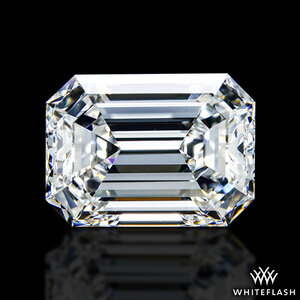
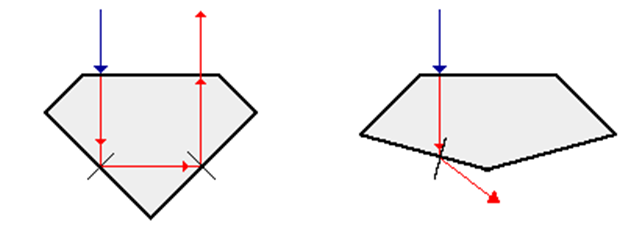
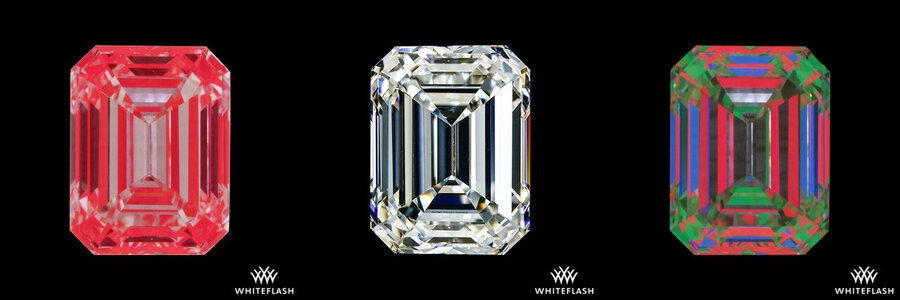
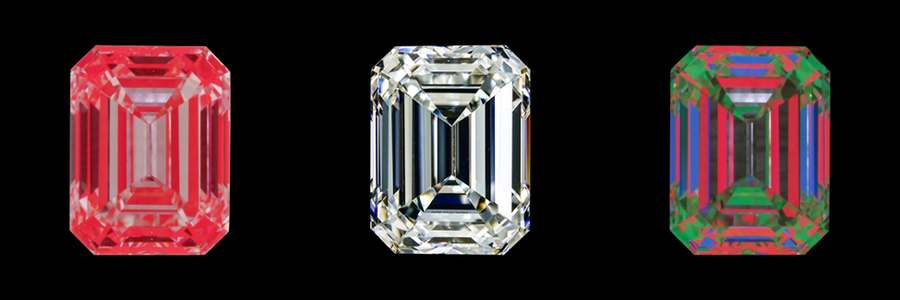
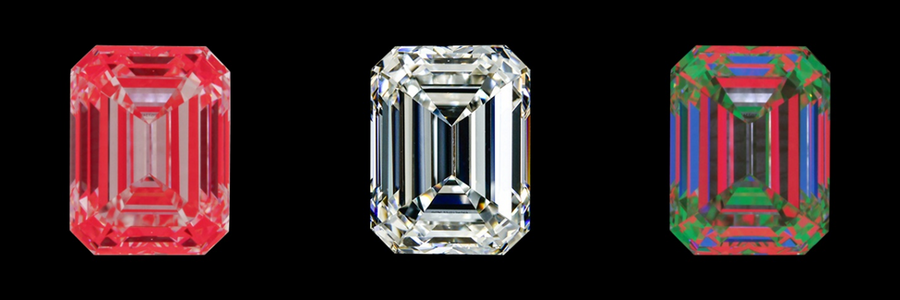






300x240.png)